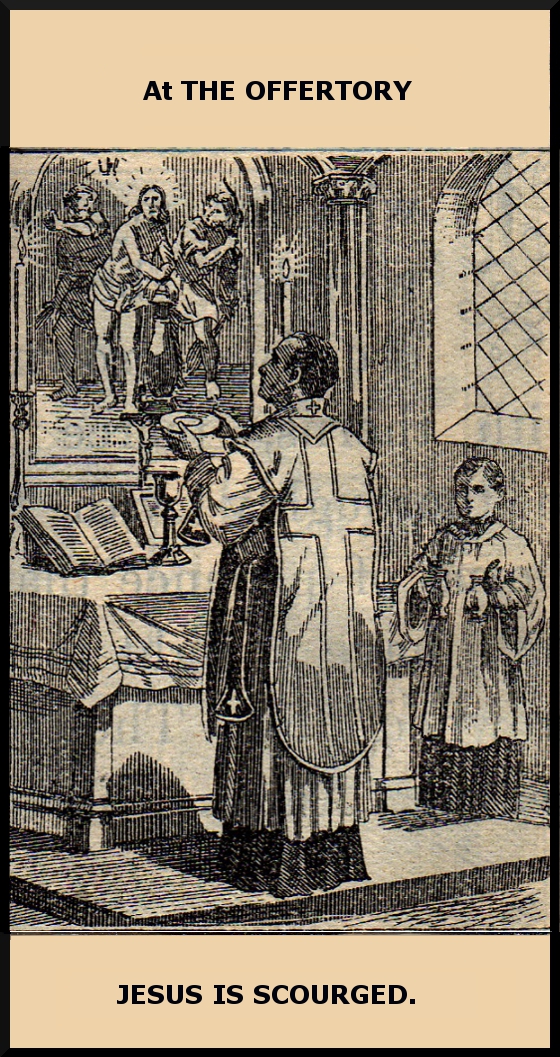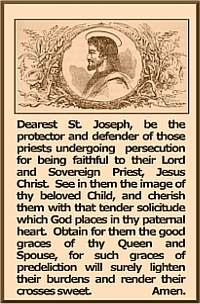 The priest prays: “Accept, O Holy Father, Almighty and eternal God, this spotless host, which I, thine unworthy servant, offer to Thee, my living and true God, to atone for my countless sins, offenses and negligences; on behalf of all here present and likewise for all faithful Christians living and dead; that it may avail for my own and for their salvation unto life everlasting.”
The priest prays: “Accept, O Holy Father, Almighty and eternal God, this spotless host, which I, thine unworthy servant, offer to Thee, my living and true God, to atone for my countless sins, offenses and negligences; on behalf of all here present and likewise for all faithful Christians living and dead; that it may avail for my own and for their salvation unto life everlasting.”
The Holy Trinity is addressed, and the Holy Spirit is specifically invoked, to come and sanctify the elements – the matter of the Sacrifice. In this way, the bread and wine are sanctified by Him, that is, set apart and made holy so as to be made worthy for their exalted purpose. By anticipation, the priest also already offers the Divine Victim to His Father. “We offer unto Thee, O Lord, the Chalice of Salvation…”
At this point, it would be most appropriate to make the offering of one’s self to our Redeemer. In the words of St. Aphonsus Liguori, “Since Jesus Christ gives entirely His Body and His Blood, let no one approach without giving himself entirely to the Lord.” And, we find this in the Roman Catholic Daily Missal, 1962: “In the Offertory, Christ unites our desires and prayers to His own offerings of Himself to the Father. As our intentions are joined to the Passion of Christ, they assume the value of the Passion in the eyes of God.”
We recall the continuation of Our Lord’s Passion when He was scourged: “Lord Jesus Christ, who for me wouldst be bound unto a pillar, and there cruelly whipped; give me grace to willingly bear the rods of Thy paternal correction and never more to scourge Thee by my sins. Amen.”
In the N.O. the reformers suppressed the Offertory prayers entirely and replaced them with a prayer that is not of Apostolic origin, but rather, is derived from the post 70 A.D. Jewish “Haggadah”, a text for the rituals of their Seder meal: “Blessed are you, Lord God of all creation, for through your goodness we have received the bread we offer you: fruit of the earth and work of human hands…”, etc. Being of Jewish origins, it obviously does not point to the sacrificial and expiatory nature of the Mass with Our Lord as the immolated Victim; nor is the Trinity addressed.



